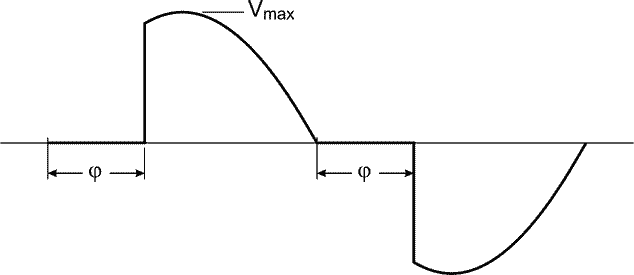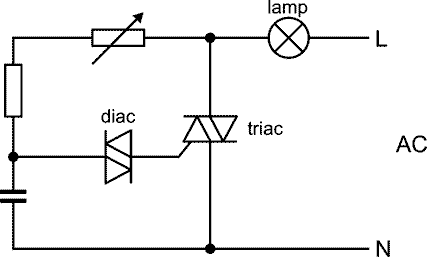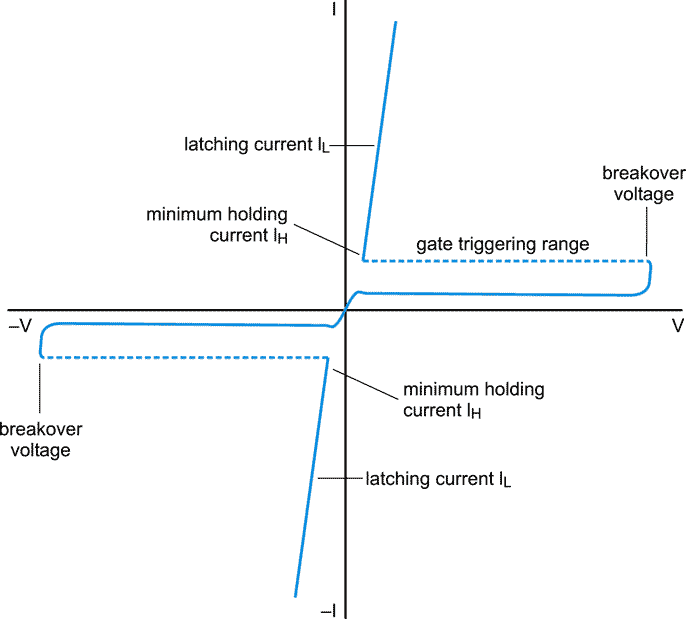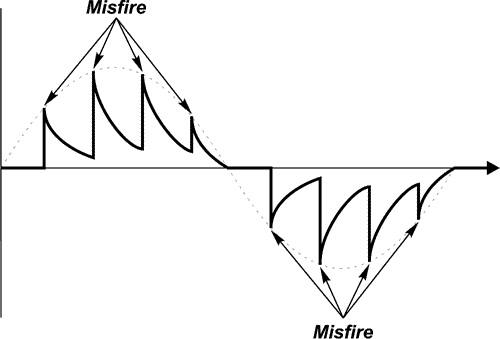Publitek Marketing Communications
Digi-Key
As rising energy prices take effect and legislation outlaws incandescent bulbs, homeowners are looking for more energy-efficient lighting that provides them with the quality of illumination and control that they have come to expect from traditional sources. Some are taking the opportunity of this change in technology to upgrade their lighting controls. The ready ability of LEDs to suit the requirements of mood lighting makes this change more attractive to users.
However, many want to stay with the existing dimmer controls they fitted to work with incandescent bulbs, opening up a market for circuitry that allows these lamps to be retrofitted into standard home sockets and work with existing control circuits. But the way that these controls work is problematic when it comes to using CFL or LED lighting and requires additional circuitry to be added to the lamps.
Almost all dimmers installed in homes are based on a phase-cut circuit. The advantage of this type of circuit is that it is very simple to design and is robust. The circuit works by simply cutting the supply to the bulb for a portion of the AC cycle, reducing the overall voltage supplied to the filament. This, in turn, reduces the filament’s light output. Because of the comparatively long time that it takes for the filament to heat up and cool down, this switching is not noticeable to the user except possibly at the very lowest settings of the dimmer. There are two main types of phase-cut dimmer. One is the leading-edge design, which is usually based on a triac. The other is the trailing-edge design, which is transistor-based. The difference lies in which part of the AC half cycle each cuts. The leading-edge design reduces power to the load by delaying the start of each half cycle; the trailing-edge circuit stops the cycle early, leading to a sharp trailing edge in terms of output voltage. Trailing-edge dimmers were developed to be compatible with the capacitive input of electronic transformers used for driving low-voltage halogen bulbs.
 |
|
| Figure 1. | A phase-cut dimmer works by restricting the power supplied to a bulb during each AC half cycle by delaying the point at which voltage is switched through to the load. |
However, in many homes triac dimmers are likely to be encountered more often. Triac dimmers cause the biggest problems for LED and CFL elements that are intended to be used as retrofit light sources.
 |
|
| Figure 2. | Circuit diagram of a triac dimmer circuit. |
The typical triac circuit includes a capacitor, a diac, a triac and a variable resistor that is used as the dimmer control. The capacitor is charged until the voltage reaches the breakdown voltage of the diac – the length of time this takes depends on the setting of the variable resistor. This, in turn, triggers the triac and current starts to flow across it, closing the circuit between the supply and the lamp. The current will continue to flow through the triac until it drops below the minimum hold current. As an incandescent bulb is a simple resistive load, this will occur when the mains AC input crosses the zero point. As the triac allows current flow in either direction, it will repeat the process during the negative half of the AC cycle.
 |
|
| Figure 3. | The switching profile of a triac. |
Many dimmers are rated for a minimum load of 40 W or more – they may need to be turned up some way from zero before an incandescent lamp starts to light. As low-energy lamps consume as little as 10 percent of the energy of an incandescent bulb, this can cause a problem with control, limiting it to a very narrow dimming range close to peak output.
Replacement lighting technologies tend to be more complex loads than incandescent bulbs. Often they present themselves as capacitive loads, which leads to the current falling below the holding level accepted by the triac several times during a cycle and it will switch off for short periods.
A further problem is that of the circuitry used to power the lamp itself. A CFL ballast will often contain rectification circuitry in which the bridge diodes only conduct for short periods of time. The same is true of simple LED drivers.
For example, it is possible to use passive driver circuits to provide power to LEDs. These generally comprise a bridge rectifier and a network of resistors and capacitors. In general, these can provide only small amounts of current as otherwise the passive components have to be very large and, therefore, bulky and expensive. Conversion efficiency is typically low for these circuits and the bridge rectifier can cause problems.
Active-mode drivers for LEDs provide greater efficiency through the use of switching regulators, typically using a buck topology, but also result in potential problems when used with a triac dimmer.
For the dimmer to work effectively, a conductive path is required through the load to allow the capacitor to charge when the triac is not conducting and for the current to remain consistent with that of the AC supply. If the dimmer’s phase cut is set to cover a very small angle, there is enough time for the low level of current available to charge the capacitor. However, with larger phase angles, the charging process may not complete within a single AC half cycle, so the triac triggers less frequently than expected.
 |
|
| Figure 4. | Dimmer operation when hold current falls too far to maintain triac on-state during each AC half cycle. |
Electromagnetic interference (EMI) filters can exacerbate the problem because the capacitive and inductive components react to the potentially large voltage change when the triac switches on. As a result, specialized driver circuitry is needed to allow the use of reactive loads such as CFL ballasts and LED drivers with dimming controls.
To ensure correct operation with a dimmer, a CFL or LED control circuit needs to emulate the resistive load characteristics of an incandescent lamp – albeit at much lower power levels. The current through the circuit should be proportional to the input RMS voltage as controlled by the phase angle setting of the dimmer control. In effect, this means raising the power factor of the circuit as close as possible to unity. A passive-mode LED driver will often have a power factor as low as 0.6, which is below the level allowed by standards such as the US Energy Star rating. The most important point is that the current through the circuit is maintained up to the point that the AC supply crosses the zero point and a new half cycle begins to ensure that the triac switches off only during that period.
Current to maintain triac operation and capacitor charging can be supplied through either a passive or active bleeder circuit. The passive bleeder is simple, comprising just a resistor and capacitor with possible inclusion of filter inductors. The capacitor, connected across the load in series with a resistor, provides the latching and hold current while the resistor dampens the effects of voltage and current spikes that occur when the triac switches on. Typically, the larger the capacitor, the better the stability of the circuit. However, it decreases efficiency and can cause greater distortion.
An alternative, favored in more recent designs, is to use an active-bleeder topology. This can cover a wider range of control and regulates input current, minimizing power loss in the bleeder circuit. A variety of active strategies is possible, including the use of simple charge-pump circuits. However, specialized LED drivers and power supplies can now incorporate detector circuits that actively monitor the behavior of the triac circuitry to better control the flow of current.
The Texas Instruments LM3445 is one such device. It incorporates a triac dim decoder and bleeder circuit in combination with a passive PFC circuit to ensure that current is drawn over most of the cycle. Current supply can be controlled using an external resistor – a lower resistance can be selected to increase compatibility with cheaper triac dimmers at the cost of some efficiency.
The dim decoder monitors the behavior of the triac, controlling the peak current that will be delivered to the power converter, allowing the use of very wide dimming ranges with on currents to the LED as low as 0.5 mA.
Also available from Texas Instruments is the TPS92070, which provides exponentially controlled light output based on the external dimmer position to deliver a wide dimming range. It also includes circuitry to automatically detect the presence of a triac dimmer by monitoring the voltage rise time of the AC input.
For triac dimming control, the ON Semiconductor NCL30000 is configured to combine accurate secondary side regulation to provide a constant current at maximum dimmer position with primary side control that limits the power as the conduction-phase angle is reduced so that it emulates the operation of an incandescent bulb. To achieve this response, the control loop is modified to revert from secondary side control to primary side control as the conduction angle is reduced. The design makes it possible to use either leading or trailing edge control as the LED output control in this circuit is made proportional just to RMS input voltage. An external capacitor facilitates fine-tuning of the output of the LED driver.
Power Integrations’ LinkSwitch-PH TopSwitch-HX power controllers use phase-angle detection to control the output current in dimming mode. This can be used to build an LED driver that will operate over the entire voltage range and provide a dimming range of up to 1000:1 without flickering. The LinkSwitch-PH uses continuous-conduction mode switching to reduce EMI and allow the use of smaller filters, helping to reduce interaction between LED driver and dimmer circuitry. The power controller includes a bleeder circuit to maintain the triac in conduction mode when comparatively little current is supplied to the LED.
Ballasts for CFL lighting also exist that are designed to work with triac dimmers. One example is the International Rectifier IRS2530D, an intelligent ballast controller with dedicated circuitry to control the transition from startup to dimming mode, with the ability to reduce output to 10 percent of maximum. The ballast circuit exhibits hysteresis to ensure that the voltage supplied is high enough to ignite the lamp without reducing the dimming range unnecessarily.
NXP Semiconductors has developed a number of CFL ballasts with dimmer support, such as the UBA2028, that incorporate a phase-cut detector to better control the output of the ballast. The UBA2027 from NXP uses a modification to the dimmer phase-cut detector to provide a more familiar change in light output to users, who are generally more sensitive to changes in illumination at low levels than those near maximum output. The part detects the phase-cut dimming angle using average voltage detection and produces a control-voltage curve that follows a cosine function, providing smaller level changes at high lumen output.
These lighting controllers demonstrate how the requirement for dimming compatibility has resulted in solutions that do not just deal with the problems caused by triac-based circuits but add features to better match the subjective experience of traditional incandescent bulbs, such as the control of lighting output curves.
Summary
Home users are keen to adopt energy-saving lighting technologies that include LEDs, with their attractive light output, as well as CFL lamps. But they need to work with existing dimmer installations. This article has provided an overview of power-control technologies that ease the job of designing dimmer-compatible lighting solutions based on CFL and LED technologies. Lighting power control ICs discussed include products from International Rectifier, NXP Semiconductors, ON Semiconductor, Power Integrations and Texas Instruments.